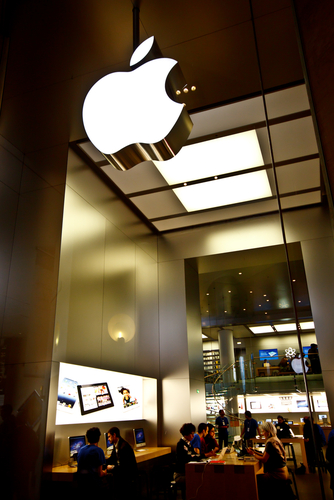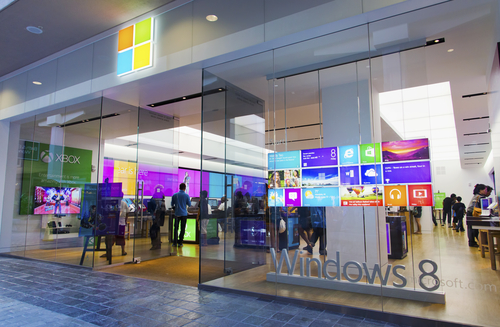December 20th, 2013

Security researchers have reported previously that hackers and some forms of malware can claim control of your computer’s webcam. In some instances of ransomware, the webcam is used to capture an image of the user in an intimidation attempt. In other cases, the webcam can be used without the users knowledge to spy on unsuspecting victims. Lucian Constantin of Network World reports that users with older Macs are particularly susceptible to this form of cyber attack.
On iMac and MacBook computers manufactured before 2008, first generation iSight webcams were used. These webcams have their LED light, which indicates when the webcam is in use, linked directly to the image sensor. When the LED is on, it means the webcam is capturing images, but hackers have found a way to alter the webcam’s firmware so the light doesn’t come on while the camera is active.
Not only does this allow spying on users without their knowledge, but being able to modify the webcam’s firmware also allows for malware to infect a Mac from a virtual machine. To do so, hackers would need to reprogram the webcam to act as a keyboard.
To defend against this type of attack, an extension could be created that blocks certain USB device requests. With a defense such as this in place, a hacker would need root access to alter the webcam’s behavior.
The most impenetrable defense would need to come in the form of a hardware redesign of the camera itself, which would make it impossible to disable the LED indicator. Researchers have already sent suggestions to Apple, but have yet to hear back.
Users who have an older Mac computer can take one easy precaution to prevent spying. That’s put tape, or a bandage, over the webcam. This doesn’t prevent malware infections, however that type of attack is extremely rare, at least for the time being.
If your device has been attacked or you’d like to improve your security, call Geek Rescue at 918-369-4335.
December 17th, 2013

With just a few days passed since Apple released a second Beta version of it’s mobile operating system, iOS, they’ve now released an official update to their desktop operating system, OS X Mavericks. The update, which is version 10.9.1, is the first update since the release of Mavericks back in October. Apple’s Support page has some details about what exactly the update addresses and some tips on how to update your Mac.
Before jumping in with the new update, there are some preliminary steps all users should take. First, this is an ideal opportunity to back-up your system. Mac offers a handy tool called Time Machine to do this quickly. Updates to your operating system aren’t expected to damage or delete your existing files, but you can never know for certain how your system will react. Even if no files or applications are negatively affected, it’s a good idea to have a restore point that goes back to before the update. This way, if you find a bug or compatibility issue, you’ll be able to un-install, in essence, the latest update.
To find this update, go to ‘Software Update’ in the ‘Apple’ menu. You’ll be able to not only find the update to OS X Mavericks, but also any other updates you need to install. Once you start the update, be sure not to interrupt the process.
Included in the 10.9.1 update to Mavericks is improved stability, compatibility and security. Here’s what users get.
- Updates for Gmail compatibility in OS X Mail.
- Improved search in Smart Mailboxes.
- A fix for issue with contact groups in Mail.
- A fix that allows Voice Over to speak sentences with emoji.
- A fix for an issue with unlocking multiple prompts unlocking Local items.
- An update to Safari 7.0.1
Apple recommends that all eligible users update their OS as soon as possible. Generally, it’s always a good idea to update when one is available because there are often security updates that close flaws and known vulnerabilities that could otherwise allow for data breaches.
If you’re having issues with your Mac that this update doesn’t fix, or you’re having problems with any device, call Geek Rescue at 918-369-4335.
November 19th, 2013

Recently, we talked about how to get the most out of OS X Mavericks, the newest operating system for Mac. There are plenty of tips for PC users too. Whitson Gordon, of Lifehacker, published a list of tips for Windows Explorer to help you organize and navigate your files and folders more efficiently.
- Change the way files are sorted
If you’ve spent much time using Windows Explorer you’ve probably noticed that there are a few different options for how to sort files and folders. If you know where to look, you can customize each folder to display exactly how you want it. While in a folder, click the ‘View’ tab and you’ll be rewarded with plenty of options. To set one as the default, rather than just a one-time change, go to ‘Options’ and ‘Change folder and search options’ from the ‘View’ tab. Then, from the open menu, select the ‘View’ tab and choose ‘Apply to folders’. This will make it a universal change for each folder in Explorer.
To select multiple files at once, you can always hold ‘Control’ while clicking them. But, all of your selections will be lost once you click without first pressing ‘Control’. That can get frustrating. Instead, use a little known Explorer feature. Go to the ‘View’ tab and select the ‘Item Checkboxes’ box. Now, hovering over a file will reveal a small box to the left of the file name that can be checked to select.
There are a few shortcuts you can take in Explorer if you know the right combination of keys to press. This saves time and eliminates the need to go hunting through menu options. Here are some of the most useful.
‘Windows’ key and ‘E’ launches Explorer.
‘Alt’ and ‘D’ or ‘Control’ and ‘L’ select the address bar.
‘Alt’ and ‘P’ shows or hides the preview pane.
‘Alt’ and ‘Enter’ shows the properties of the currently selected file.
- Change the starting point
Explorer comes with a default starting point you’ll see every time you open it. Depending on the version of Windows you’re using, this could be the Libraries folder, This PC folder or My Computer. If you’re constantly having to go through multiple folders to get what you want, you should consider changing Explorer’s starting point. If you’re not using Windows 8.1, you can just go to Explorer’s properties menu and change the ‘Target’ bar to the address of the folder you want to start on. In Windows 8.1, it involves creating a new, custom Explorer short-cut and a short snippet of code.
Windows Explorer is a powerful tool that allows you to quickly access any file on your PC. With these tips, it becomes easier and more efficient to use.
At Geek Rescue, we know computers. If you’re having problems with yours bring it to us, or call us at 918-369-4335. We get rid of malware or viruses, repair hardware and more.
November 13th, 2013

Apple’s OS X Mavericks features ‘Finder’, which is your primary tool for navigating the operating system. It’s not particularly jaw-dropping, or even exciting, but, as Thorin Klosowski of LifeHacker writes, it does offer a number of ways for you to be more productive and make OS X easier to use. Here are some of the most useful tips and tricks to get the most out of Finder.
A new feature in OS X is the use of tags. Any item you save, or is already saved, can have a tag added to it to help you stay organized. To manage all your tags, however, you’ll need Finder. Click on the ‘Finder’ tab at the top of the screen, then select ‘Preferences’ and ‘Tags’ from the menu. You’ll be able to delete tags, edit them, create favorites and organize them to your liking.
Finder is useful for so many jobs, you may need multiple tabs open at once. To do this, press Command+T and a new Finder tab will open. To navigate between tabs quickly, press Control+Shift and either the left or right arrow key.
By default, Finder shows your files in columns listed in alphabetical order by name, with date modified, size and kind also appearing. To add options and change the way files are sorted, go to the Finder menu, select ‘View’ and ‘Show View Options’ while you’re in a folder. Or, to change the arrangement altogether, go to ‘View’ then ‘Arrange by’.
The Finder Toolbar is highly customizable and it probably initially includes items you don’t need. To remove unused items, go to the Finder menu, select ‘View’ and ‘Customize Toolbar’. You can rearrange or remove items completely. To add items, including files, folders and apps, select the item, then Command+Click drag it to the toolbar.
These tips help you customize your Mac to make it easier to use. If you encounter problems like broken hardware, decreased performance or malware, bring your machine to Geek Rescue or call us at 918-369-4335.
October 29th, 2013

Apple recently released their new operating system for Mac users, OS X 10.9 Mavericks, and made it free to download. Similar to the early days of iOS7 for iPhones, however, Mavericks has had a rocky start filled with bugs. Apple will have to release an update for some of the more serious problems, but, as Roberto Baldwin reports for Wired, there are some fixes any user is capable themselves. Here’s a look at some of the simplest.
Even before getting to install the new operating system, many users are encountering problems. Slow or stalled downloads have plagued the release, but there are some easy fixes. If your download is taking forever, go to Launchpad, the Mavericks download may be paused. In that case, just click the icon and it will resume. If it’s still too slow, hold down Option until the app icons start to bounce, then click the ‘X’ by the Mavericks download to cancel it. Try to download again from the App store and it should download much faster.
Scrolling up and down seems to be disabled in certain apps, including the Google Chrome web browser. To fix the problem, you could completely delete the app, then re-install. That has worked for many users. However, if you’d rather go through that process, you can instead navigate to ‘System Preferences’ in the Finder. Then go to ‘General’, ‘Show Scroll Bars’ and select ‘Always’. This brings back your scrolling options for all apps.
For enhanced security, an email client that refuses to remember your password is a good thing. Most users find it incredibly frustrating to have to put in their password every time they check their mail on their own machine, however. If Mail is forgetting your password, fix it by going to the Menu Bar, then select ‘Mail’ and ‘Preferences’. Click the Accounts tab and change ‘Authentication’ to ‘Apple Token’.
Other issues encountered so far in Mavericks include Gmail not working correctly, problems with QuickLook and slow or stalled shutdowns. Apple is working to patch some of these and others require some advanced knowledge to overcome.
For help fixing these bugs in the Tulsa area, come by or call Geek Rescue at 918-369-4335. We also fix broken machines and those infected with malware or viruses.
September 13th, 2013

Viruses and malware are a constant threat for PC users, but Mac users have been able to avoid most of the security threats over the years. One prominent threat recently suggests that security for Mac users may be more important than ever before, however.
Samantha Murphy Kelly of Mashable reports that a malware threat targeting Macs has been discovered on compromised websites.
The threat likely won’t affect most of Mac users, particularly in the US, because it was discovered on anti-Chinese websites hosted in Tibet. It also relies on Macs using Java applets on the web, which is a minority of users.
This malware threat is a concern, however, for a few reasons. Namely, the malware used gives hackers the ability to access remote files and monitor a user’s activity on their device. The fact that it targets Mac users is also concerning because of the lack of security on many machines. Finally, this malware wasn’t disseminated through spam email or downloads. Simply stumbling onto the wrong website could infect your computer.
So, while this particular attack likely won’t infect your computer, it does suggest that more security is necessary even for Mac users. If cyber criminals can deploy an attack of this nature in Tibet, they could certainly do the same on a site closer to home.
To enhance the security on your machine, be it Mac or PC, contact Geek Rescue at 918-369-4335. We not only offer a variety of security options for a variety of devices, but we also fix and clean devices with malware or virus infections.
















